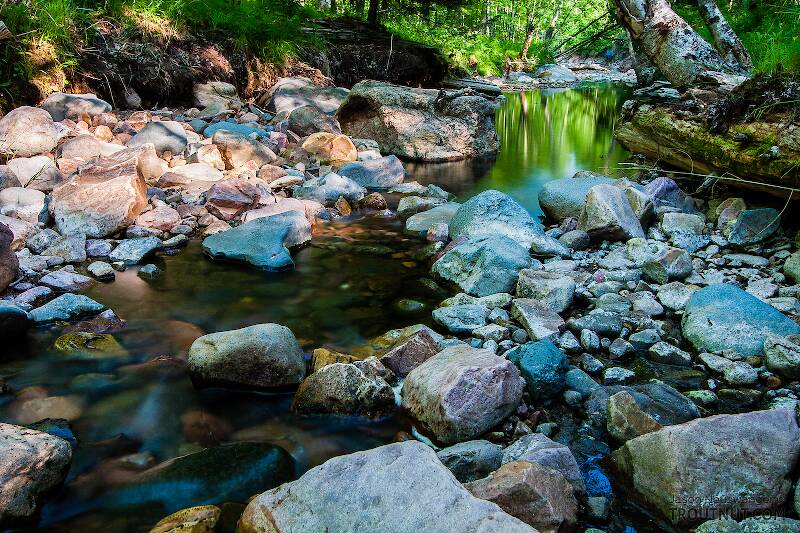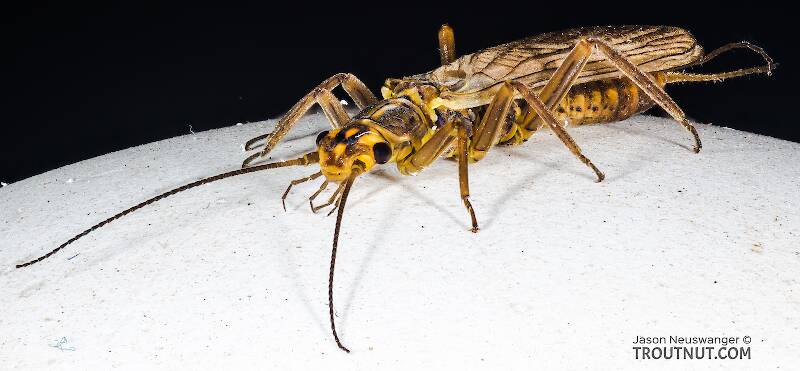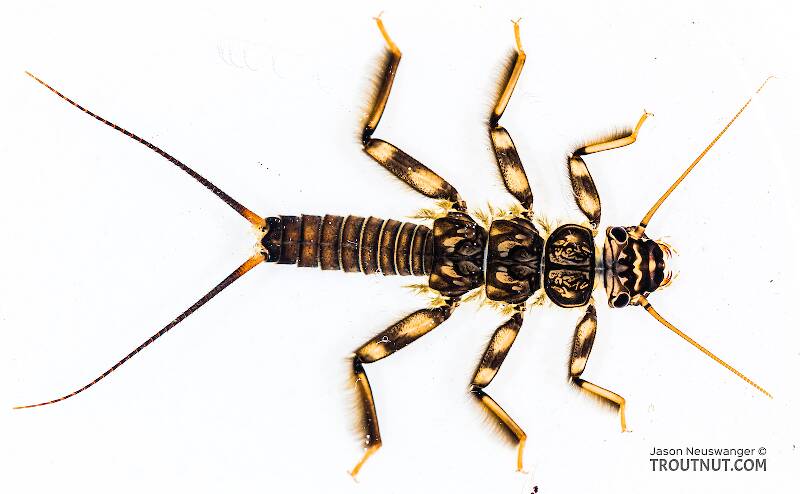
Blue-winged Olives
Baetis
Tiny Baetis mayflies are perhaps the most commonly encountered and imitated by anglers on all American trout streams due to their great abundance, widespread distribution, and trout-friendly emergence habits.
Featured on the forum

This is an interesting one. Following the keys in Merritt R.W., Cummins, K.W., and Berg, M.B. (2019) and Jacobus et al. (2014), it keys clearly to Ephemerella. Jacobus et al provide a key to species, but some of the characteristics are tricky to interpret without illustrations. If I didn't make any mistakes, this one keys to Ephemerella mucronata, which has not previously been reported any closer to here than Montana and Alberta. The main character seems to fit well: "Abdominal terga with prominent, paired, subparallel, spiculate ridges." Several illustrations or descriptions of this holarctic species from the US and Europe seem to match, including the body length, tarsal claws and denticles, labial palp, and gill shapes. These sources include including Richard Allen's original description of this species in North America under the now-defunct name E. moffatae in Allen RK (1977) and the figures in this description of the species in Italy.

Troutnut is a project started in 2003 by salmonid ecologist Jason "Troutnut" Neuswanger to help anglers and
fly tyers unabashedly embrace the entomological side of the sport. Learn more about Troutnut or
support the project for an enhanced experience here.
This topic is about the Insect Order Plecoptera
Stoneflies are the largest of the three main types of trout stream insects. While far less important than caddis and mayflies in the East and Midwest where they are mostly thought of as handy nymphs to imitate when nothing much is hatching, it's in the West where this order comes into its own. They can cause outstanding fishing, and on many rivers their hatches are the premier events of the season.The year begins with the little dark stoneflies of the Capniidae, Leuctridae, and Nemouridae families as some of the only active aquatic insects available to trout. As the year progresses into late Winter and early Spring, the Large Springflies of the Perlodidae family in the West and Willowflies of the Taeniopterygidae are sometimes the first dry-fly insects of the season. When Spring fully arrives, so do the most significant stoneflies for the angler - the gigantic Pteronarcyidae Salmonflies of western legend. The large Golden Stones of the Perlidae supplement these hatches and are more common across the country. Summer brings on significant hatches of the Little Yellow Stones of the Perlodidae family and the little yellow or green Chloroperlidae flies that are common sights.
Example specimens
Hoss on Apr 28, 2013April 28th, 2013, 9:14 pm EDT
I was just at my local river and the fish were pounding the surface. I was able to identify the fly on the water as a little green stonefly and am very interested in some good patterns to tie to imitate it. Any and all suggestions would be appreciated.
Martinlf on Apr 29, 2013April 29th, 2013, 6:27 am EDT
An elk hair caddis with a lime green body and light wing should catch many of these fish. Or try a trude style caddis with a lime green body, long clear/white or ginger antron wing and ginger hackle. The internet will have lots of other patterns.
"He spread them a yard and a half. 'And every one that got away is this big.'"
--Fred Chappell
--Fred Chappell
PaulRoberts on Apr 29, 2013April 29th, 2013, 7:36 am EDT
I've seen clouds of little greens and little yellows, and rarely found them in trout stomachs. At least in appropriate proportion. Maybe just a lack of observations on my part.
Are you sure it was the stones they were on? Not Baetis, or a midge?
Are you sure it was the stones they were on? Not Baetis, or a midge?
Hoss on Apr 29, 2013April 29th, 2013, 10:24 am EDT
Thanks on the fly ideas I will give those a shot. And as well will check the stomach's of the next couple to see if something else is coming of that I did not see. And let you know. I did see a few caddis out but very few and the little stones where fluttering all over the waters surface
Jodea on May 2, 2013May 2nd, 2013, 1:12 pm EDT
Could get a container and collect a few .. after studying there distinctions under a microscope and then tie some up , or you can either use the live fly directly to see the varied responce from the trout or release them and watch there movement on the water to asertain how best to present them ..
I had a similar day on a very clear trout river here in Ireland ,, i had spotted a good size trout in a fast current taking something off the surface ..after dragging my net through the folage and grass on the bank i realised there was a lot more crane fly than any other,i tryed a few artificial fly first crane fly patterns and many other rising him only once and missing. then i tryed the live fly and gently cast a small live crane fly .. wham first cast and a sure take too , was a nice 2.5lb wild brown trout (released then after)
I had a similar day on a very clear trout river here in Ireland ,, i had spotted a good size trout in a fast current taking something off the surface ..after dragging my net through the folage and grass on the bank i realised there was a lot more crane fly than any other,i tryed a few artificial fly first crane fly patterns and many other rising him only once and missing. then i tryed the live fly and gently cast a small live crane fly .. wham first cast and a sure take too , was a nice 2.5lb wild brown trout (released then after)
Quick Reply
Related Discussions
Topic
Replies
Last Reply
4
Sep 4, 2012
by Entoman
by Entoman
2
Nov 4, 2012
by Aszat
by Aszat







